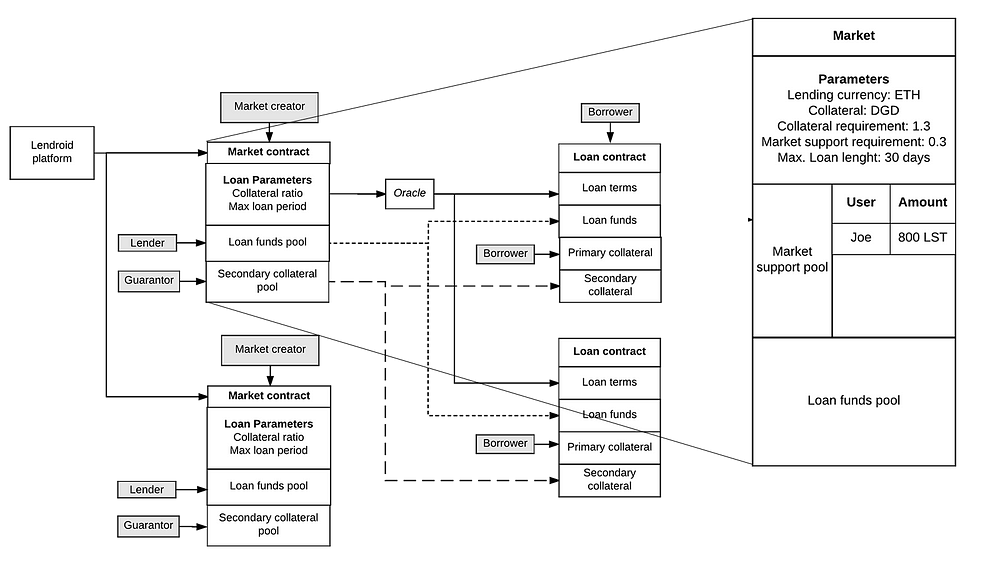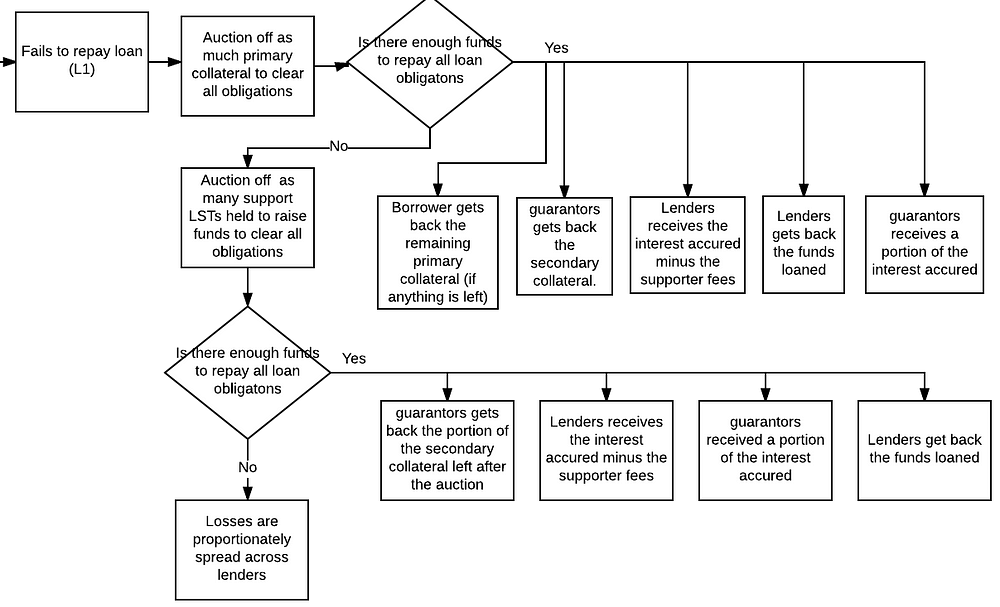Over Mark.Space
Mark.Space is een alternatieve realiteit, beschikbaar in elke browser, zonder pre-installatie en registratie. Dit platform is compatibel met elke VR-headset - volledige wereld bestaande uit winkels, kantoren, banken, bioscopen, clubs, communities of interest en persoonlijke ruimtes.
Technisch gezien is Mark.Space een nieuwe generatie internet: compatibele websites die enerzijds onafhankelijk zijn (omdat ze een eigen domein hebben) en anderzijds verenigd zijn door een gemeenschappelijk transactie- en boekhoudsysteem op de Blockchain en een globale zoekmachine. Bovendien kan elke gebruiker de 3D / VR / AR (virtual reality / augmented reality) -ruimten binnen het universum Mark.Space gratis bezoeken.
Hier is onze presentatievideo over Mark.Space :
Virtuele realiteit
Het AR / VR-marktaandeel zal groeien van USD 11,4 miljard in 2017 tot USD 215 miljard in 2021. VR is veel meer dan gamen; het is ook e-commerce, bedrijfsleven, onderwijs, wetenschap, filmindustrie en vele andere gebieden. Alle Mark.Space locaties zijn 3D-zones die volledig in elke browser werken en compatibel zijn met alle VR-headsets. Deze oplossing verhoogt het publiek van gebruikers en contentproviders met een factor tien. Het gebruik van VR-brillen of -helmen is optioneel, wat absoluut unieke kansen biedt voor de ontwikkeling van de sectoren van de interneteconomie.
Blockchain
Eenheden vormen de basis van het Mark.Space universum virtuele onroerend goed met een open source-adres. Het register van vastgoedadministratie voor elke eenheid wordt bijgehouden op de Blockchain, die de beveiliging van persoonlijke gegevens garandeert. Eenheden kunnen via slimme contracten worden verkocht of verhuurd aan andere gebruikers.
Sociaal netwerk en blogosfeer
Met een publiek van meer dan 3 miljard mensen zijn ze het belangrijkste kanaal voor communicatie en het consumeren van inhoud. Dankzij de visuele mogelijkheden van 3D / VR en krachtige platformcommunicatietools (p2p-spraakcommunicatie, interactiviteit van eenheden in ecosystemen, multithreaded uitzendingen), zal de sociale virtuele levensduur van MARK.SPACE sterk lijken op de ideale echte levensstijl van haar gebruikers.
Issues & Solutions
1. VR in e-commerce
De vraag naar de virtualisatie van commerciële projecten is op dit moment te moeilijk om te implementeren. In termen van kosten en het creëren van virtuele winkels is het samenvoegen van dergelijke projecten uitgesloten.
Oplossing We hebben een platform gebouwd waarmee iedereen commerciële VR-spaces kan maken en ontwerpen zonder zelfs maar de basiskennis van coderen en 3D-modellering te kennen.
2. Mijnwerkers alternatief
De complexiteit van crypto-valuta in de mijnbouw groeit snel en veel crypto-valuta's gebruiken initieel POS of zijn van plan over te schakelen naar POW. Het financiële welzijn van mijnwerkers wordt bedreigd.
Oplossing Mark.Space betekent honderdduizenden high-end renderers, waarvoor terabytes aan inhoud moet worden gemaakt. We hebben een protocol gemaakt voor gedecentraliseerde weergave en gegevensopslag. Mijnwerkers kunnen ons programma downloaden om de weergave uit te voeren. Voor gegevensopslag ontvangen ze beloningen in de vorm van MRK-tokens. Bovendien impliceert ons ecosysteem een groot aantal transacties.
3. Centralisatie van sociaal netwerk
Populaire sociale communities, samen met advertentie-inkomsten, zijn eigendom van en worden beheerd door een enkele onderneming.
Oplossing door een MarkSpace community-maker te worden, kunt u kiezen tussen de districten "Zakelijk", "Gemeenschap", "Winkelen" en "Woonwijken". Deze sociale communities zullen uw managementrollen en inkomsten verdelen.
4. Wantrouwen token
Veel projecten worden ervan beschuldigd nutteloze tokens te hebben zonder echte waarde. Daarom zijn hun tarieven altijd laag.
Onze oplossing van MRK-token is een utility-token. Alle gebruikers kunnen het gebruiken om echte en virtuele goederen en diensten te verkopen, werknemers in te huren en voor hun werk te betalen, eenheden te creëren (en ze te vullen met objecten en inhoud voor hun individualisering). Mijnwerkers worden als tokens betaald voor platformondersteuning. Eenheidsprijs blijft in token bij beperkt aantal eenheden. Elke eenheid kan een populaire en krachtige buur hebben (bijvoorbeeld een bekend merk). Al deze factoren zijn onmiskenbare drivers over het nut van tokens.
Mark.Space-afmetingen
Het MARK.SPACE-platform bestaat uit steden die volgens bepaalde regels door een gemeenschap, bedrijf of persoon kunnen worden gemaakt. De eerste stad op het platform zal worden gelanceerd volgens de routekaart. Het aantal steden in het systeem is onbeperkt.
Een stad is een virtuele ruimte met een maximaal geschatte oppervlakte van 713.440.000 m2, die is verdeeld in districten, blokken en eenheden. De eigenaar van een stad stelt de regels vast voor registratie, verkoop- en huurkosten van eenheden, evenals transactiecommissies en voorwaarden voor reclame; de eigenaar behoudt het recht op de domeinnaam.
Minimale stadswaarden:
- In één stad - 1 district
- In een district - 1 blok
- In één blok - 260 eenheden
- In één eenheid - 1 doos
Maximale stadswaarden:
- In één stad - 35 districten
- In een district - 35 blokken
- In één blok van -260 eenheden
- In één eenheid - 35 dozen
Totaal in één stad:
- 35 districten
- 1.225 blokken
- 318.500 eenheden
- 11.147.500 dozen
Wat is disctrict ?
Een district is een ruimte met een maximaal geschatte oppervlakte van 20.384.000m2, verdeeld in blokken en eenheden. Een district kan een exclusieve eigenaar hebben, die: zijn eigen regels vaststelt voor de verkoop en verhuur van eenheden; bepaalt welke soorten eenheden het kunnen invoeren Gebied; maakt of digitaliseert het basisontwerp van de wijk (blokken kunnen één basis of verschillende ontwerpen hebben); kan de wijk verbinden met zijn eigen domeinnaam.
Wat is a block ?
Een blok is een ruimte met een maximaal geschat oppervlak van 582.400 m2, verdeeld in 260 eenheden, 10 straten en 25 kruispunten. De buurten kunnen met elkaar verbonden zijn en werken volgens de regels van het district. Een blok kan een exclusieve eigen eigenaar hebben, die: zijn eigen regels kan opstellen voor de verkoop en verhuur van eenheden, evenals het uiterlijk van het blok; en kan een blok verbinden met zijn eigen domeinnaam.
Wat is Een eenheid ?
Een eenheid is een ruimte met een maximaal geschatte oppervlakte van 2.240 m2, die uit dozen kan bestaan. Het minimaal vereiste aantal is één vak, met een maximum van 35 dozen. Een eenheid heeft een straatuitgang en een ingang, die leidt naar de locatie van andere eenheden (websites). De eigenaar van een eenheid bepaalt het uiterlijk, plaatst objecten in de virtuele ruimte en vult ze met inhoud. Er zijn verschillende soorten eenheden die verschillen in functionaliteit:
- Residentieel
- Boodschappen doen
- Zakelijk
- Gemeenschappen
- Onderwijs
- Entertainment
Mark.Space Token Sale
MRK-tokens zijn gebaseerd op het Ethereum-protocol en voldoen aan de ERC20-standaard. MRK Tokens smart contract-adres wordt tijdig gepubliceerd voorafgaand aan MRK Token Pre-Sale en Token Sale.
MRK Tokens heeft geen andere rechten, expliciet of impliciet, dan die hierin uiteengezet, afhankelijk van MarkSpace, succesvolle voltooiing en inzet van het Platform. In het bijzonder zullen MRK Token-houders geen invloed hebben op de ontwikkeling of het bestuur van Mark.Space en MRK-tokens vertegenwoordigen of vormen geen eigendomsrecht, aandeel, veiligheid of gelijkwaardige rechten of enig recht op toekomstige inkomstenaandelen, of enige andere vorm van deelname aan of met betrekking tot Mark.Space.
MRK-tokens zijn ontworpen om uitwisselbaar te zijn op cryptografische token-uitwisselingen. Mark.Space geeft geen garanties dat MRK Tokens uitwisselbaar zal zijn op grotere beurzen, maar doet er alles aan om alles te doen wat redelijk mogelijk is en binnen de mogelijkheden van Mark.Space om uitwisselingen van MRK Tokens mogelijk te maken op zoveel mogelijk beurzen. 38. MRK Tokens wordt verdeeld over twee evenementen: Token Pre-Sale en Token Sale. MRK Tokens Pre-Sale vindt plaats van 24 oktober 2017 - 17 november 2017. MRK Tokens Sale wordt gehouden van 21 november 2017 tot 21 december 2017.
Deelnemers begrijpen en accepteren dat zij een bedrag van ETH of kunnen verzenden
BTC gelijk aan niet minder dan 0,10 USD afhankelijk van de kosten van ETH tot de datum van het begin van de MRK Token Sale in een slim contractsysteem op Ethereum en een hoeveelheid MRK-tokens ontvangen in ruil. De prijs van één MRK-token is uiteengezet in het bedrag van ETH of BTC gelijk aan 0,10 USD ("Aankoopbedrag") tegen de toepasselijke wisselkoers. Voor de doeleinden van deze Overeenkomst wordt de waarde van het Aankoopbedrag geacht in Amerikaanse dollars te zijn, ongeacht of de Deelnemer betaalt in ETH of BTC, gewaardeerd tegen de toepasselijke wisselkoers voor ETH of BTC tot de datum van het begin van de Tokenverkoop. Er zullen in totaal 3.000.000.000 (drie miljard) MRK-tokens beschikbaar zijn ("Total MRK Tokens Number"). 1.170.000.000 MRK-tokens ("Total MRK Token Sale Number") zullen beschikbaar zijn tijdens de Token Sale-periodes, 250.000.000 MRK-tokens op Token Pre-Sale en 720.000.000 op Token Sale. MARK.SPACE maakt extra MRK-tokens aan na de initiële tokenrelease, 200 000 000 tokens zijn gereserveerd voor een gesloten Token Pre-Sale voor projectpartners.
MRK Tokens worden op de volgende manier verdeeld:
1. 6,67% van het totale MRK-tokensnummer zal worden verdeeld tijdens MRK Tokens Closed Pre-Sale voor projectpartners;
2. 32,33% van het totale MRK-tokennummer zal worden verdeeld tijdens MRK Tokens Sale;
3. 10,00% van het totale MRK-tokensnummer moet worden bewaard door MARK.SPACE;
4. 19,00% van het totale MRK-tokennummer moet worden aangehouden als reserve-liquiditeitsfonds;
5. 3% van het totale MRK-tokennummer zal worden toegewezen om partners te stimuleren;
6. 0,50% van het totale MRK-tokennummer zal worden toegewezen voor de verwerving van klanten;
7. 3% van het totale MRK-tokennummer wordt toegewezen aan projectadviseurs;
8. 22,50% van het totale MRK-tokennummer zal worden toegewezen aan toekomstige leveranciers van computers en gegevensopslag.
Token prijs
Onze routekaart
Kernteam
* YANA KONTOROVICH as CEO en oprichter, PhD in Economics
Ondernemer, investeerder
10 jaar ervaring in e-commerce, 7 jaar beleggingservaring, 4 jaar ervaring mode-industrie
* EVGENI MALKIN as Medeoprichter en eigenaar van 2 virtuele ruimtes binnen het platform
Professionele hockeyspeler, 3 keer Stanley Cup winnaar en 2 keer wereldkampioen.
* OLEG ERSHOV als medeoprichter, marketingprofessional, ondernemer.
4 jaar ervaring in eventmarketing, 8 jaar in internetmarketing. Gelanceerde projecten: Monster Mania, Moda Mark.
* DENIS POLULYAKHOV als medeoprichter
IT-ondernemer met 9 jaar ervaring. Oprichter van CARBYN Blockchain Group, CCO Moda Mark (fashion e-commerce).
* VLADISLAV UTUSHKIN als marketeer, ondernemer
Meer dan 10 jaar ervaring in actieve verkoop in de TOP3-bankgroep. 5 jaar ervaring in internetmarketing. CEO en mede-oprichter "RVR Project".
VLADIMIR SHLIAPIN als CTO
Ondernemer, IT-professional met 25 jaar ervaring Master's Degree in Mathematics.
* ALEXANDER SHTANKOVSKY als hoofd van ontwikkelaars, IT-ontwikkelaar
MSc in wiskunde. 27 jaar ervaring in IT. Gelanceerd Project: Site Makers.
* SIRUZ FARAMARZ als hoofd van de afdeling VR & 3D
12 jaar ervaring in 3D-visualisatieproductie, 5 jaar productontwerp. Gelanceerde projecten: Mall Mark, MARK.SPACE.
Auteur door Dico88



























